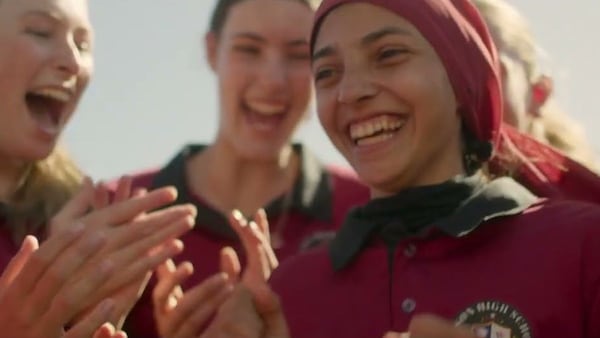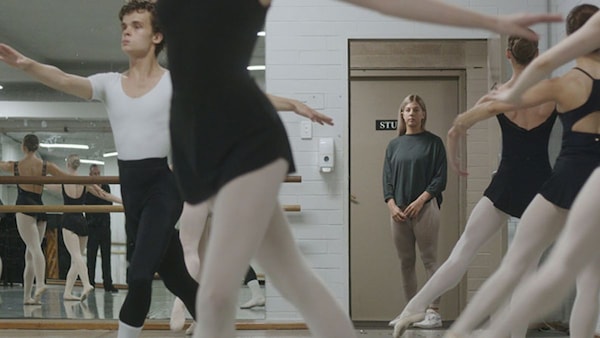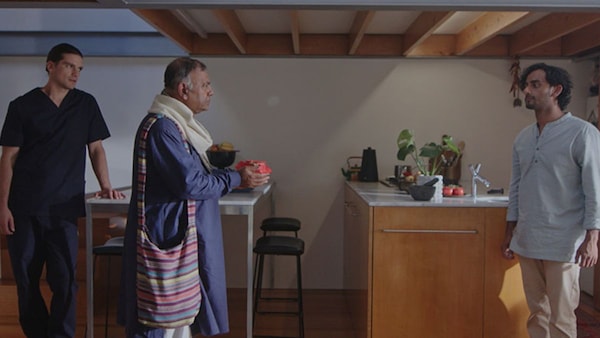My Melbourne & The Many Ways To Belong
If My Melbourne stemmed from the need to celebrate the diversity of a country and a city, this attribute of the place shape-shifts as a person or an emotion with every film.

Promo poster for My Melbourne.
Last Updated: 05.55 PM, Mar 17, 2025
MY MELBOURNE, the anthology of four short films rooted in the city and imbued with varied threads, culminates into a sweeping theme of belonging. The title carries a clue which is reinforced during the runtime by four filmmakers. Each brings with them their distinct styles that melds to be a tale of hope, asking in unison one singular question: what does it take to belong? Even then, some treat the bluntness of the query with more grace and tact than others.
For instance, in the film Jules, directed by Arif Ali (Imtiaz Ali is the creative director and Tammy Yang is the co-director), the question of belonging is verbalised by an immigrant but conveyed through an insider. It is a thoughtful analogy that draws a bigger question in the wake: can we ever really belong? Sakshi (an impressive Arushi Sharma) has moved to Melbourne with her husband and works as a chef at a restaurant. We don’t see the husband but imprints of his control are everywhere. It is on Sakshi’s face when he texts about money not yet being credited to her account (which he has access to), it is on her nervous demeanour when he hollers at her over the phone, coercing her to take a picture down from social media which she hadn’t posted, to begin with. And it is present in the way he forces his way around by blocking her card and denying her dignity.

As Sakshi struggles to find a footing in a foreign place (she lies to her mother about her job and replaces her modest workplace and job designation with that of a manager at a restaurant) she comes across Jules (Kat Stewart), a homeless woman who needs no one and nothing to survive. When they first meet, the sight of Jules scares Sakshi till it has a more transformative effect with time. The blatancy Ali reserves for the husband’s character dissipates when it comes to his treatment of the two women. Jules never spells it out but watching Jules being displaced yet holding her own in a city which is hers lends comfort and courage to Sakshi, reassuring her that it is okay not to have her feet touch the ground. The short steers to a simplified ending but till then, it unravels as an engaging work that accommodates discomfort instead of easy trappings.
Kabir Khan looks at the predicament through the resolution that only sports can provide. In his film, titled Setara (co-directed by Puneet Gulati), the titular protagonist is a girl (Setara Amiri, an Afghan refugee on whose life the film is based on) who was forced to flee her country with her sister and mother after the Taliban took over (2021). Although the timelines are not expressly mentioned, the filmmaker sneaks in details like a flashback scene where Setara, a budding cricketer, had to tearfully bury her trophies before leaving the country.
In that sense, Melbourne is a safe haven but it is also unfamiliar territory for her and for her mother, a former judge who struggles with feeling inadequate due to her inability to speak English. Khan, one of the more popular mainstream filmmakers to weave in politics in his narrative, does the same here. After Setara joins a school, it takes little for others (and a school coach played by veteran cricketer Brad Hodge) to see her potential as a cricketer.

These easy contrivances continue right till the end where Setara does everything on the field (from batting to bowling) with success but Setara is less about an Afghanistan girl getting acclimatised in Melbourne and more about Melbourne (a stand-in for the West) getting acclimatised to a girl from Afghanistan. Setara’s commitment to this distinction comprises its merit. Khan resorts to small but defining inclusions like her classmates’ curiosity about hijab and Setara quelling that with a non-fussy response, or the way she asks if the meat is halal or not when offered. In a similar instance, Setara’s mother talks about the greatness of Afghanistan before it was invaded. That the filmmakers remain attuned to the difference between religion and prejudice and identity and belonging remain Setara’s greatest strength.
Like Setara, even Emma by Rima Das (co-directed by Samira Cox) draws from the protagonist's life. In her film, Emma is played by Ryanna Lawson, who has struggled with auditory perception since she was four. Her vocation was at odds with her ailment. Being a dancer, listening to sound is crucial. Yet, Lawson carved out a distinct path for herself where her passion for dance overtook everything else. Emma follows this arc as the central character undergoes challenges and feelings of self-doubt till she meets Nathan (Nathan Borg), a deaf dancer whose approval of himself encourages her.

Emma might be an unembellished retelling but it is not an anomaly in Das’ oeuvre which is filled with coming-of-age stories of young girls (Village Rockstars, Bulbul Can Sing). Yet, the filmmaker’s voice and style remain largely absent in this generic tale of self-acceptance.
While this is not the case with Nandini, a film by Onir that carries every semblance of his style, it is also the lesser work in the anthology. Co-directed by William Duan, Nandini is about a grief-stricken man coming to Australia to meet his son after the death of his wife. Indraneel (Arka Das) is a queer man living in Melbourne with his partner (Jackson Gallagher). It takes little to understand that Indraneel (called Indro by his father and Neel by his partner as if he were two different beings) was not accepted at home. The one who understood him, his mother, has passed away and her ashes have come to her son’s city.

If this is a familiar premise then the filmmakers dunk it with more grating familiarity. A conversation about fish escalates to obvious remarks like “Why couldn’t you accept me?” and “Why are you behaving like a girl?” that ideally should have subtext. Narratives about queer people have taken considerable strides in the last couple of years and at this time it has earned the nuance that Nandini fails to afford.
If My Melbourne stemmed from the need to celebrate the diversity of a country and a city, this attribute of the place shape-shifts as a person or an emotion with every film. Even when the commentary becomes obvious it does not lean on being misleading. This constitutes the biggest draw and, to a large extent, offsets the baffling unambitious spirit of the anthology.

 Premium
Premium